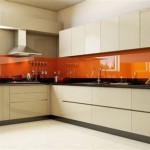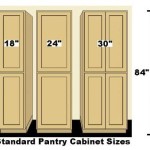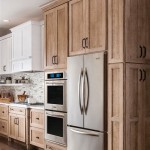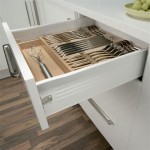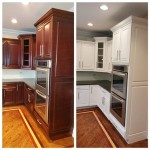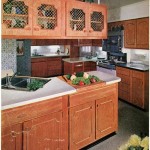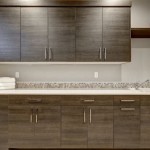Wood Knobs: A Classic Choice for Kitchen Cabinets
Wood knobs represent a timeless and versatile hardware option for kitchen cabinets. Their enduring appeal stems from their natural beauty, adaptability to various design styles, and tactile warmth. Selecting the right wood knobs can significantly enhance the overall aesthetic of a kitchen, complementing the cabinetry and reflecting the homeowner's personal taste.
The selection process involves considering several factors, including the type of wood, the size and shape of the knob, the finish, and the overall design scheme of the kitchen. A cohesive and well-chosen selection of wood knobs can transform a kitchen from ordinary to visually striking.
Understanding the Variety of Wood Types
The aesthetic and functional properties of wood knobs are heavily influenced by the type of wood used in their construction. Different wood species possess distinct grain patterns, colors, and hardness levels, each offering unique advantages and disadvantages in terms of durability and visual appeal. Therefore, understanding the characteristics of various wood types is crucial for making an informed decision.
Oak: Oak is a consistently popular choice for wood knobs due to its strength, durability, and distinctive grain pattern. Available in both red and white varieties, oak offers versatility in terms of color. Red oak typically features a warmer tone, while white oak exhibits a cooler, more neutral hue. Oak's inherent strength makes it resistant to dents and scratches, contributing to the longevity of the knobs. However, oak can be more porous than other hardwoods, requiring a thorough sealing process to prevent moisture absorption and staining.
Maple: Maple is a fine-grained hardwood known for its smooth surface and light color. Its uniform texture makes it an excellent choice for painting or staining, allowing for customization to match any kitchen color scheme. Maple is also a relatively hard wood, providing good resistance to everyday wear and tear. However, its light color can be susceptible to yellowing over time, especially when exposed to sunlight. Careful consideration should be given to the finish to minimize this effect.
Cherry: Cherry wood is prized for its rich, reddish-brown color and elegant grain pattern. It offers a touch of sophistication and warmth to kitchen cabinetry. Cherry is a moderately hard wood, providing adequate durability for cabinet knobs. One of its unique characteristics is its tendency to darken over time with exposure to light, developing a deeper, richer patina. This natural aging process can enhance the beauty of the knobs, adding character and depth. However, it also means that the color of cherry wood knobs may change gradually over time.
Walnut: Walnut is a premium hardwood known for its dark, chocolate-brown color and distinctive swirling grain patterns. It provides a luxurious and sophisticated look to kitchen cabinets. Walnut is a relatively hard wood, making it durable and resistant to scratches. Its dark color adds depth and contrast to lighter cabinetry. Due to its rich color and unique grain, walnut is often left with a clear finish to showcase its natural beauty. However, walnut is generally more expensive than other wood types, making it a higher-end option.
Pine: Pine is a softwood often used for rustic or farmhouse-style kitchens. It is a relatively inexpensive option compared to hardwoods. Pine is characterized by its light color, prominent knots, and soft texture. It is easy to work with and can be painted or stained to achieve a variety of looks. However, pine is softer than hardwoods, making it more susceptible to dents and scratches. It may require more frequent refinishing or replacement compared to other wood types.
Beyond these common choices, other wood options exist, including birch, ash, hickory, and exotic wood species. The selection should be based on desired aesthetic, budget, and durability requirements.
Knob Size, Shape, and Ergonomics
Beyond the wood species, considering the size, shape, and ergonomics of the knob is vital for both aesthetic appeal and functionality. The size of the knob should be proportional to the size of the cabinet door or drawer. A knob that is too small may look insignificant, while one that is too large may overwhelm the cabinet.
Size Considerations: A general guideline is to choose knobs that are approximately 1 to 1.5 inches in diameter for standard upper cabinets and drawers. Larger drawers, such as those found in base cabinets, may benefit from slightly larger knobs, ranging from 1.25 to 2 inches in diameter. Ultimately, the best size is a matter of personal preference and should be determined by visually assessing different sizes on the cabinets.
Shape Variations: Wood knobs are available in a variety of shapes, including round, square, oval, mushroom-shaped, and more decorative designs. Round knobs are a classic and versatile choice, suitable for a wide range of kitchen styles. Square or rectangular knobs offer a more contemporary and geometric look. Mushroom-shaped knobs provide a traditional and ergonomic grip. Decorative knobs can add a unique and personalized touch to the kitchen, but care should be taken to ensure they complement the overall design.
Ergonomic Design: The shape of the knob also affects its ergonomics, or how comfortable it is to grip and use. Knobs with a smooth, rounded surface are generally more comfortable to grip than those with sharp edges or intricate details. Consider the ease of use for all members of the household, including children and individuals with arthritis or limited hand strength. Testing different knob shapes in person can help in determining which ones are the most comfortable and functional.
Proportion and Balance: When selecting the size and shape of wood knobs, it's important to consider the overall proportion and balance of the kitchen design. The knobs should complement the cabinetry and other hardware elements, such as pulls and hinges. Avoid mixing too many different styles or sizes of knobs, as this can create a cluttered and disjointed look. Sticking to a consistent theme or style will help to create a cohesive and visually appealing kitchen.
It is also essential to consider the projection of the knob from the cabinet surface. A knob that projects too far may be a safety hazard, while one that doesn't project enough may be difficult to grip. Finding the right balance between aesthetics and functionality is crucial for creating a kitchen that is both beautiful and practical.
Finishing and Installation
The finish applied to wood knobs plays a significant role in their appearance, durability, and ease of maintenance. Various finishing options exist, each offering different levels of protection and aesthetic appeal.
Clear Finishes: Clear finishes, such as varnish or lacquer, are designed to protect the wood while allowing its natural beauty to shine through. These finishes are available in a variety of sheens, from matte to high-gloss. Matte finishes provide a more natural and understated look, while high-gloss finishes offer a more polished and reflective appearance. Clear finishes are a good choice for showcasing the natural grain and color of the wood. However, they may not provide as much protection against scratches and stains as other options.
Stained Finishes: Staining allows for changing the color of the wood while still allowing the grain to be visible. Stains are available in a wide range of colors, from light and natural tones to rich and dark hues. Staining can be used to match the knobs to the cabinetry or to create a contrasting accent. After staining, it is important to apply a clear topcoat to protect the stain and provide a durable finish. The choice of stain should complement the overall color scheme of the kitchen.
Painted Finishes: Painting wood knobs allows for complete customization and the ability to match any color. Painted finishes can be used to create a bold and vibrant look or a more subtle and understated effect. When painting wood knobs, it is important to use a high-quality primer and paint that is specifically designed for wood. This will ensure a smooth and durable finish that will resist chipping and peeling. Consider the sheen of the paint, opting for matte, satin, or gloss depending on the desired aesthetic.
Installation Considerations: Proper installation is essential for ensuring that wood knobs are secure and functional. The installation process typically involves drilling a hole through the cabinet door or drawer and attaching the knob with a screw. It is important to use the correct size drill bit to avoid damaging the wood. The screw should be long enough to securely attach the knob without protruding through the back of the cabinet. Ensure all knobs are aligned properly for a uniform look. Using a template can help to ensure consistent placement.
Maintenance and Care: To keep wood knobs looking their best, it is important to clean them regularly with a soft, damp cloth. Avoid using harsh chemicals or abrasive cleaners, as these can damage the finish. For stubborn stains, a mild soap and water solution can be used. Periodically inspect the knobs for any signs of wear or damage, such as scratches, chips, or loose screws. Touch-up the finish as needed to maintain their appearance and protect the wood. Regular maintenance will help to prolong the life of the knobs and keep them looking their best for years to come.
Ultimately, a well-considered selection of wood knobs can significantly contribute to the overall aesthetic and functionality of a kitchen. The material properties, size, shape, and finish all play critical roles in achieving a cohesive and visually appealing design.

Design Idea Oversized Wood Knobs On Cabinets

Wood Mid Century Modern Cabinet Hardware Kitchen Forge Studio

Painted Wooden Knobs

Knobs Or Pulls Tips For Choosing Cabinet Hardware Wood Co

Wood Kitchen Cabinet Knobs Big Selection Beslag Com

How To Install Cabinet Hardware In 4 Steps

Mid Century Modern Cabinet Wood Pulls And Knobs Kitchen Closet Furniture Hardware

Advantages And Disadvantages Of Wooden Cabinet Knobs

Kitchen Cabinet Handles And Knobs Capricoast Blog

62 Unique Kitchen Cabinet Hardware Ideas For Your Home Best Cabinets Handles
Related Posts

